In the vast and captivating world of the animal kingdom, the diversity of physical features never fails to astonish us. From extravagant plumage to intricate patterns, nature has endowed creatures with an array of remarkable traits. One such intriguing feature is the size and shape of their lips. While lips may often be associated with human aesthetics, many animals possess lips that are equally fascinating and functional.
In this article, we embark on an exploration of the animal realm to present you with the complete list of animals boasting the most prominent and distinctive lips. From creatures dwelling in the depths of the oceans to those roaming the grassy plains, we will delve into the extraordinary diversity of these creatures and shed light on the purpose behind their awe-inspiring lip structures.
The Complete List of the 35 Animals With the Biggest Lips
1. Archerfish:
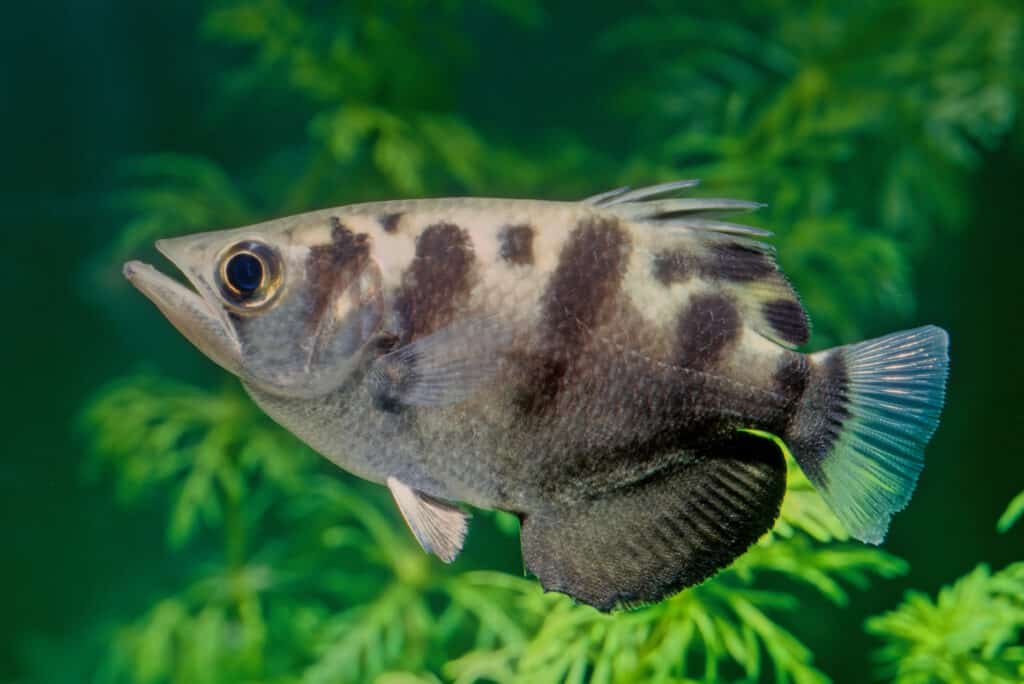
©Roberto Dani/Shutterstock.com
Archerfish have large, protruding lips that they use to shoot jets of water at insects above the water’s surface. This hunting technique helps them dislodge prey and knock it into the water, where they can consume it.
2. Babirusa:
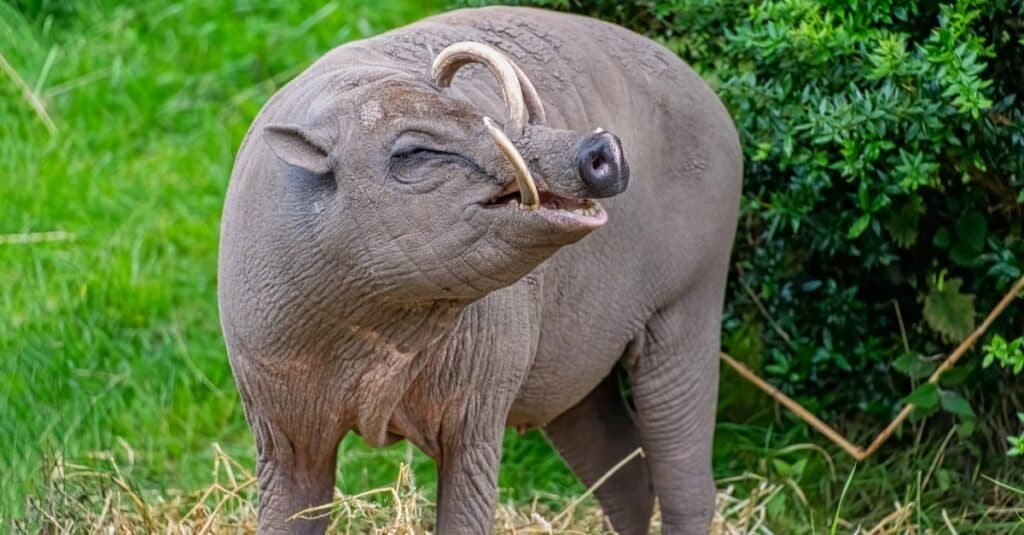
The Babirusa’s name means pig deer after their unusual appearance!
©Craig Russell/Shutterstock.com
Babirusas are a type of wild pig with elongated, curving upper canine teeth that protrude from their mouths. These teeth are covered by thick lips.
3. Baboons:

©iStock.com/andyjkramer
Baboons have prominent, protruding lips that contribute to their facial expressions and serve them well while foraging for food.
4. Bactrian Camels:
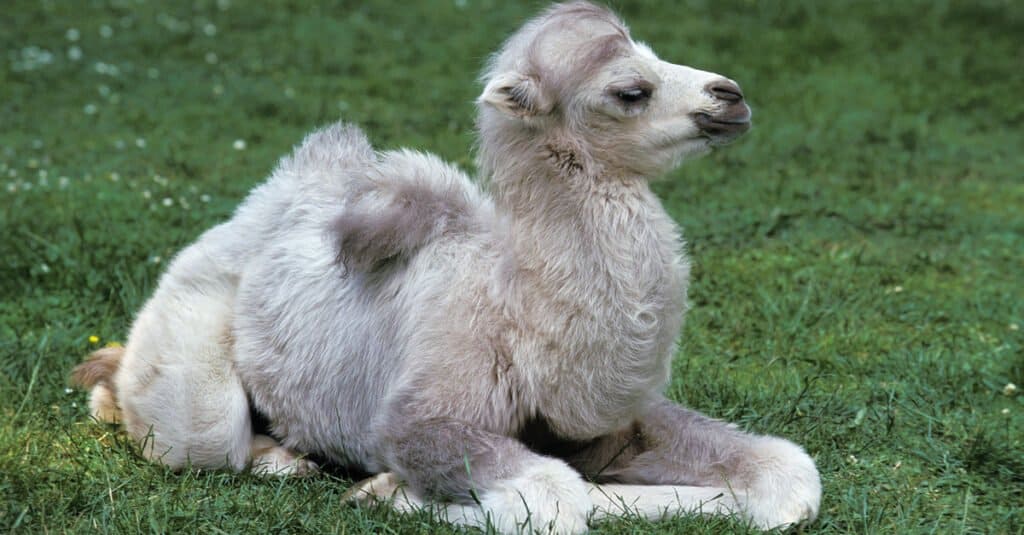
©slowmotiongli/Shutterstock.com
Bactrian camels have long, thick lips that enable them to graze on tough desert vegetation, such as thorny shrubs and dry grasses.
5. Bearded Seals:

©Sergey Uryadnikov/Shutterstock.com
Bearded seals have thick, fleshy lips that are covered in long, stiff whiskers. These lips help them catch and eat fish, squid, and other prey in their Arctic habitat.
6. Bison:

European settlers’ arrival in Alaska in the late 19th century significantly impacted the bison population. New hunting tools, including firearms that the settlers brought, made it possible for them to hunt bison on a bigger scale.
©Scalia Media/Shutterstock.com
Bison have relatively large lips. Their lips are thick and muscular, which helps them graze on grasses and sedges, their primary food source. The lips of bison allow them to gather and pull vegetation into their mouths as they feed.
7. Camels:
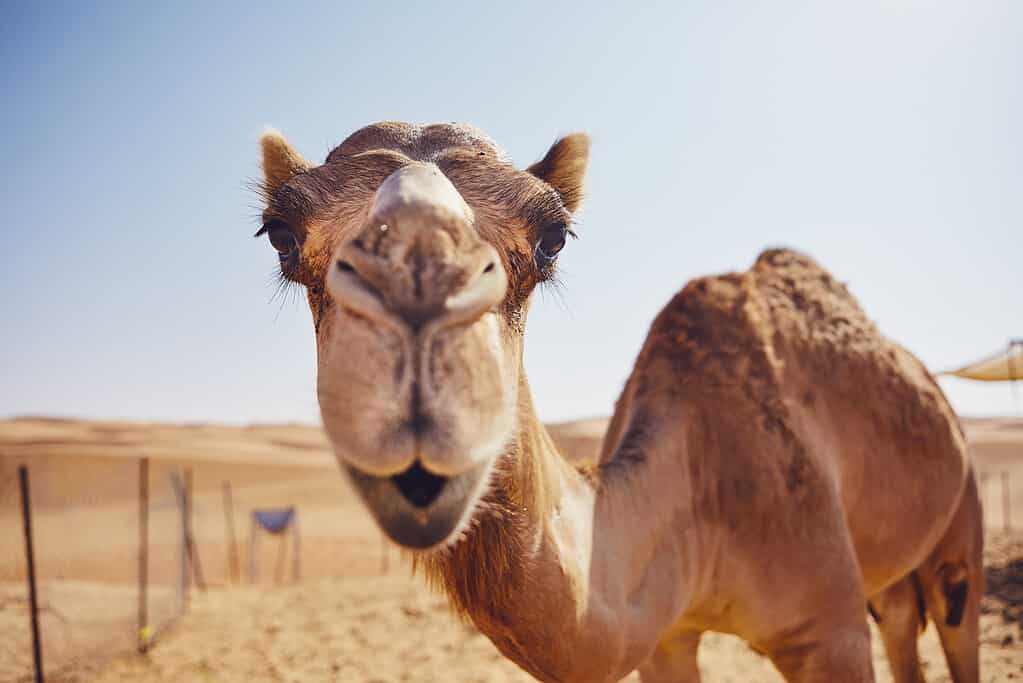
Close-up view of curious camel against sand dunes of desert, Sultanate of Oman.
©Chalabala/iStock via Getty Images
Camels have thick, rubbery lips that allow them to eat thorny desert plants without getting injured.
8. Capybaras:

Did you know that
capybaras
and crocodiles are BFFs?
©Henner Damke/Shutterstock.com
Capybaras have large, round lips that they use for grazing on grass and aquatic vegetation.
Catfish: Some species of catfish, such as the Piraiba and Mekong giant catfish, have large, fleshy lips that aid in their bottom-feeding habits.
9. Crocodiles:
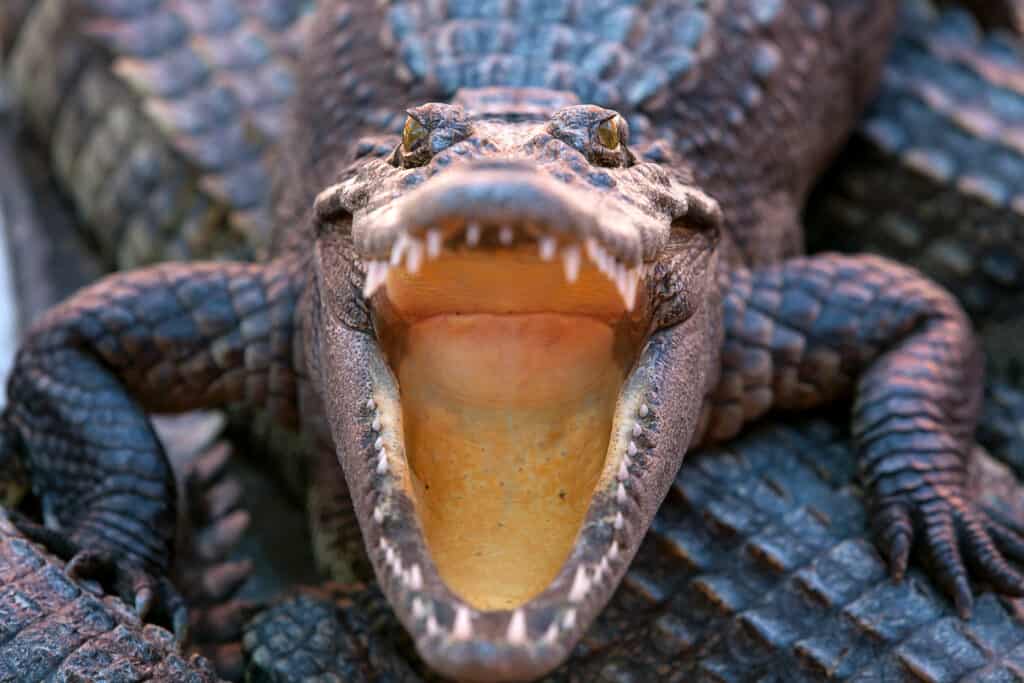
Crocodiles are apex predators.
©nattanan726/Shutterstock.com
Crocodiles have thick, scaly lips that cover their powerful jaws, providing protection and aiding in capturing prey.
10. Elephant Seal:

Female Elephant seal (Mirounga leonina), on Kerguelen Island
Elephant seals have large, fleshy lips that are used in various ways. The males have an inflatable, trunk-like nose called a proboscis, which they use to make loud vocalizations and establish dominance during breeding season.
11. Elephants:
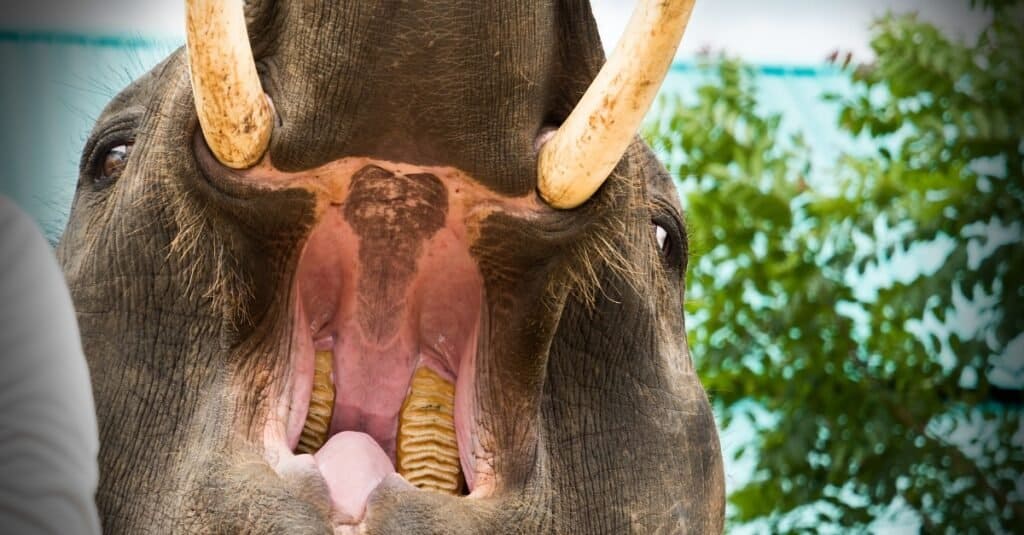
An elephant opens its mouth. If you look closely, you can see its molars!
©iStock.com/Roman_Baiadin
Elephants have large, muscular lips that they use for grasping food, especially leaves and branches.
12. Flowerhorns:
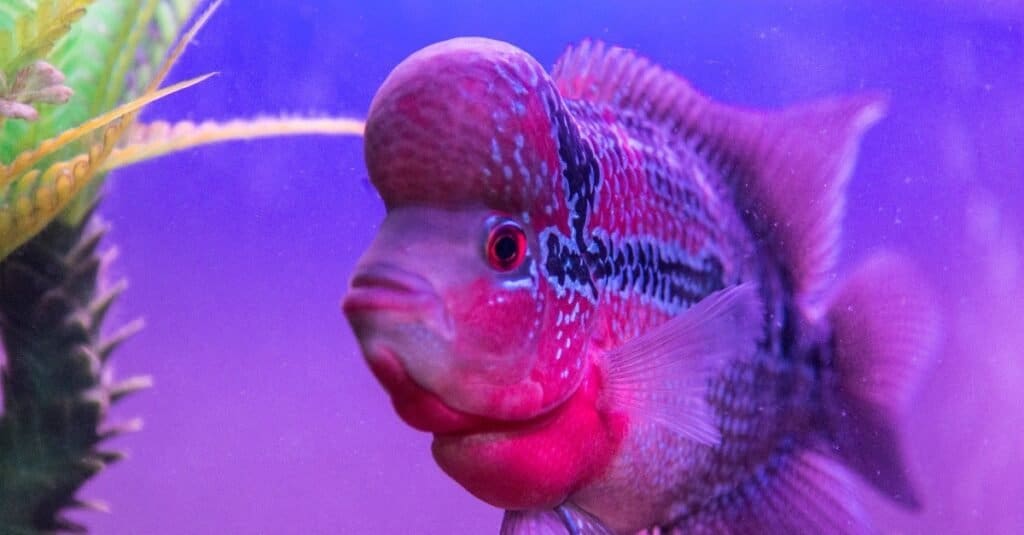
Beautiful Flowerhorn cichlid fish in water tank with blue background.
©iStock.com/Khoblaun
Flowerhorn cichlids are popular aquarium fish with distinctive protruding lips, giving them a unique appearance.
13. Giraffes:

Giraffes, like humans, possess 32 teeth, but have most of them located at the back of their mouths.
©LindyCro/Shutterstock.com
Giraffes have large, thick lips that they use to pluck leaves from trees, especially from the tops of acacia trees.
14. Gorillas:
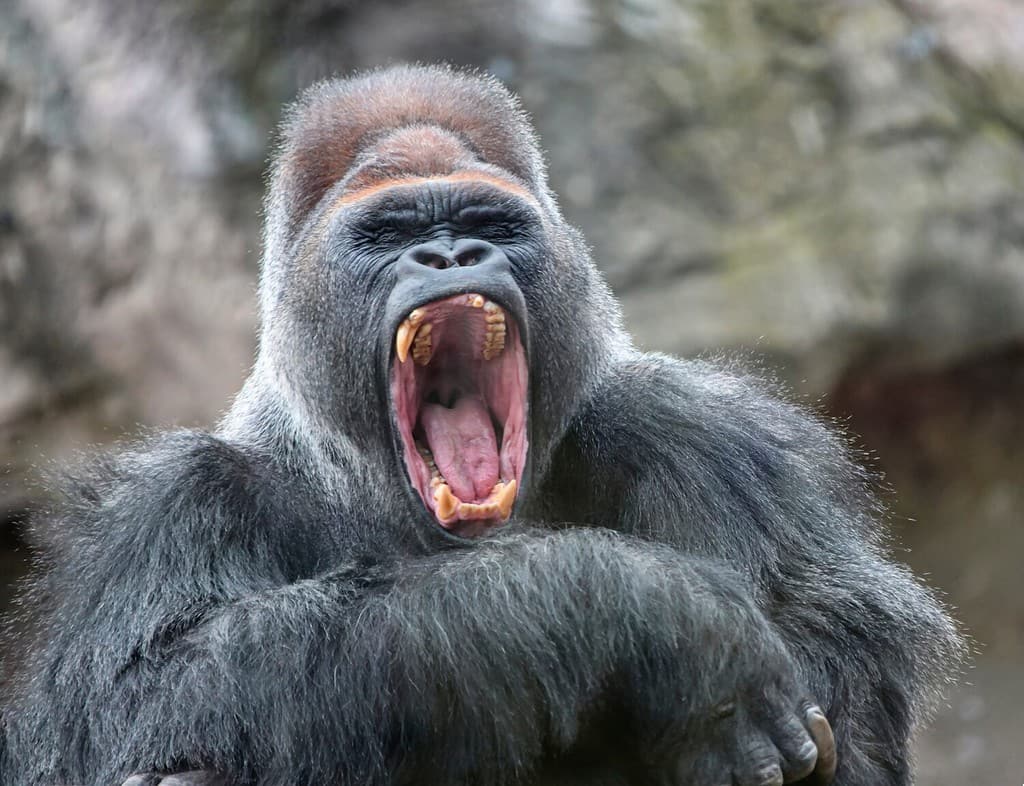
©Okyela/Shutterstock.com
Gorillas have thick, powerful lips that play a role in their communication and facial expressions.
15. Groupers:
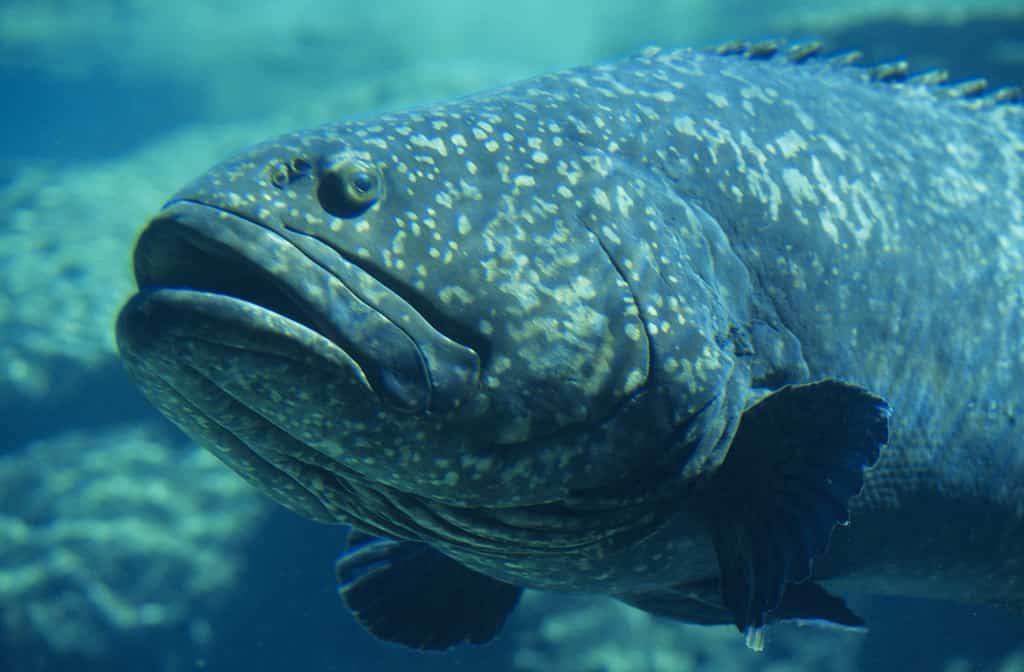
The Warsaw Grouper’s large mouth allow them to swallow their prey whole.
©Tom Brakefield/ via Getty Images
Groupers are known for their plump, protruding lips, which aid in their feeding habits and allow them to engulf prey in a single gulp.
16. Hammerhead Sharks:

©HakBak/Shutterstock.com
Hammerhead sharks have an unusual head shape that includes wide, flattened extensions on either side of their mouths. These extensions, called cephalofoils, house their eyes and sensory organs.
17. Hippopotamus:
Hippos have large, thick lips that cover their long, sharp teeth. These lips help them graze on grasses and aquatic plants.
18. Horses:
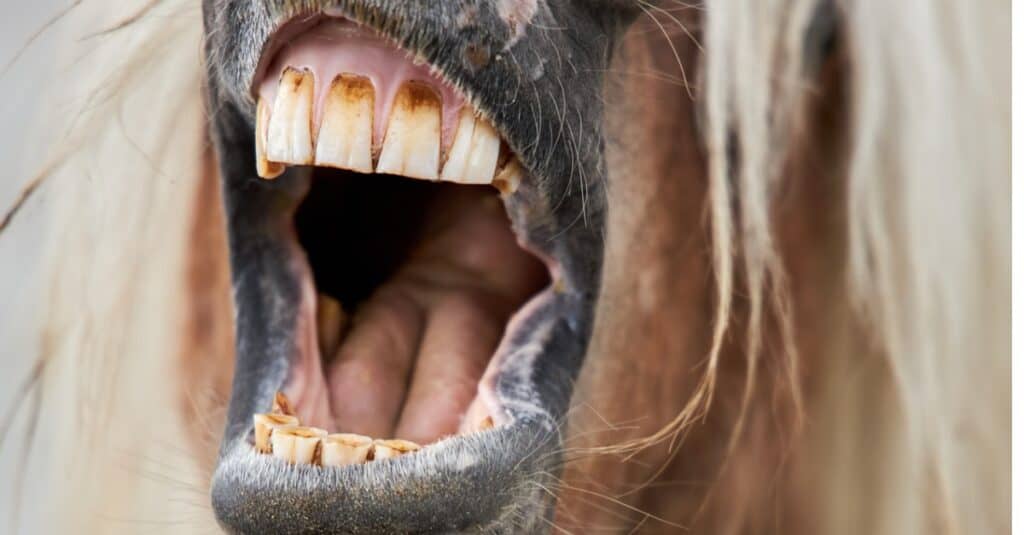
©iStock.com/ovbelov
Horses have relatively large lips compared to many other animals. Their lips are flexible and prehensile, meaning they can grasp and manipulate objects. Horses use their lips to gather and pull vegetation into their mouths while grazing. The upper lip of a horse is particularly mobile and can curl and stretch to reach and pluck grass or other food sources. The size and flexibility of their lips allow horses to efficiently consume their herbivorous diet.
19. Longhorn Cowfish:

Its shell isn’t the only thing protecting it from predators. The longhorn cowfish also has horns on its head that make it harder to swallow.
©iStock.com/Grigorev_Vladimir
Longhorn cowfish have a unique, box-shaped body with a protruding, tube-like snout. This snout, which has fleshy lips, is used for foraging and feeding on small invertebrates.
Manatees: Manatees have large, fleshy lips that they use to graze on aquatic vegetation. Their lips help them tear and consume the plants.
20. Manatees:
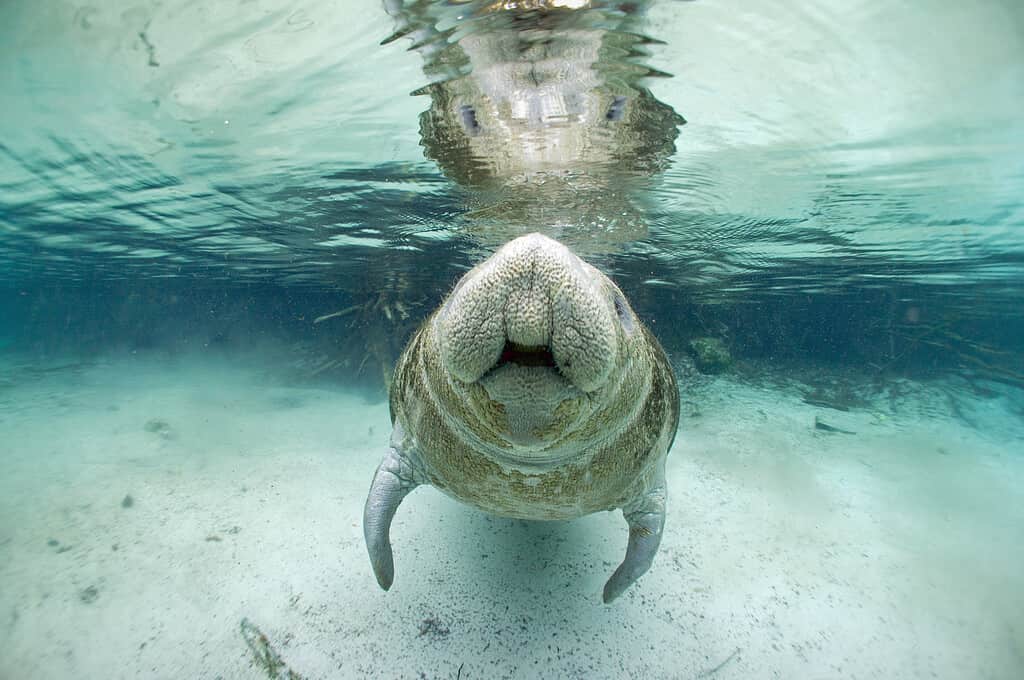
A Manatee in the Crystal River, Florida.
©tobiasfrei/ via Getty Images
Manatees, also known as sea cows, have large, flexible lips that they use to graze on aquatic plants. Their lips help them grasp and pull vegetation into their mouths.
21. Mandrill:
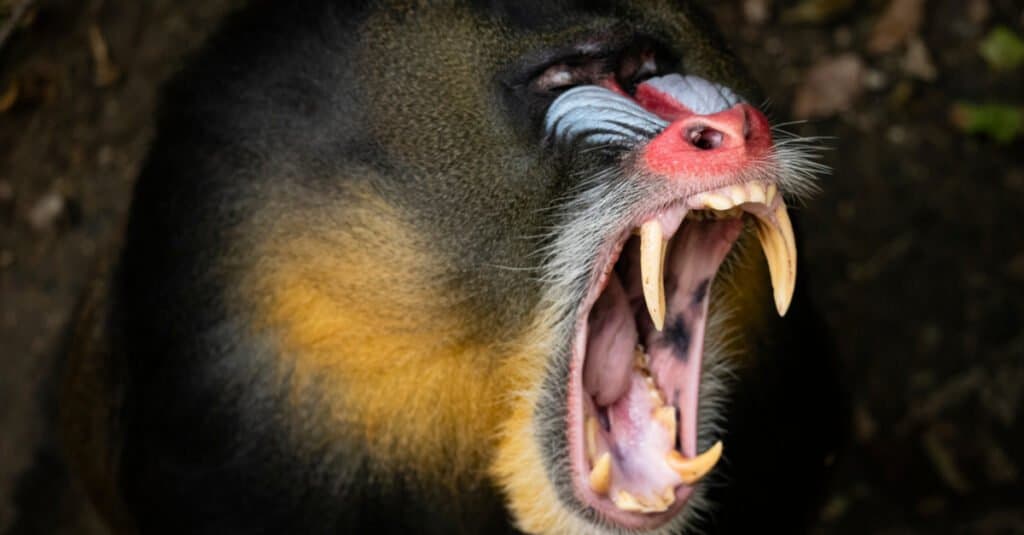
©Maciej Kopaniecki/Shutterstock.com
Mandrills are primates known for their colorful faces and prominent lips. The males have bright red lips, which are thought to play a role in social communication and mate selection.
22. Moose:

Bull Shiras Moose in Autumn
©Tom Tietz/Shutterstock.com
Moose have a long, flexible upper lip that extends over their lower jaw, which they use to grasp and strip off leaves and twigs from trees and shrubs.
23. Moray Eels:
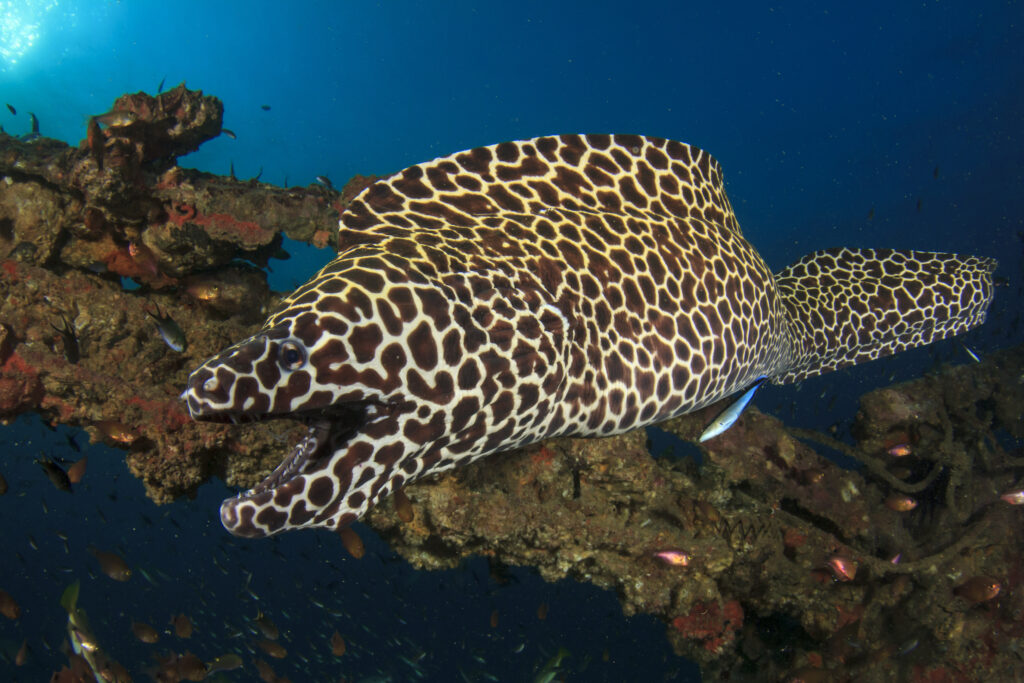
Honeycomb Moray Eel
©Rich Carey/Shutterstock.com
Moray eels have large, muscular lips that cover their sharp teeth, allowing them to capture and hold onto prey.
24. Okapi:

©wrangel/ via Getty Images
Okapis have long, dark tongues that can extend to reach leaves and other vegetation. These tongues are surrounded by thick lips.
25. Orangutans:
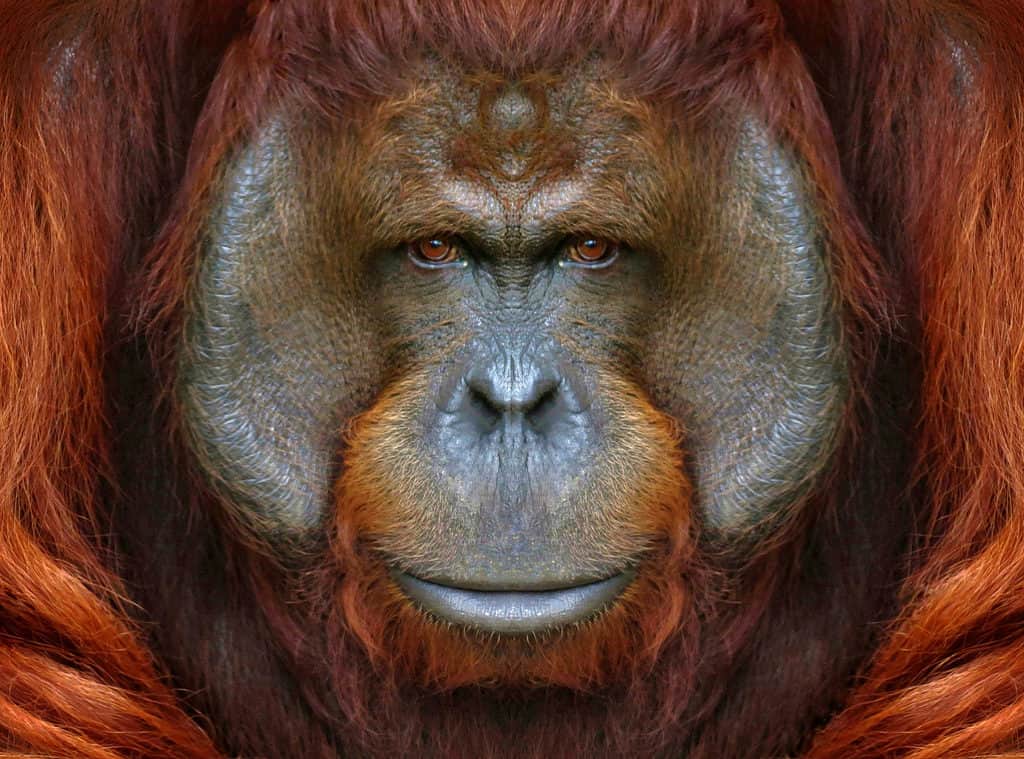
Orangutans are exceptionally adept at manipulating their environments through the use of tools and memories.
©arul_nkh/Shutterstock.com
Orangutans have prominent lips that contribute to their expressive facial features.
26. Paddlefish:
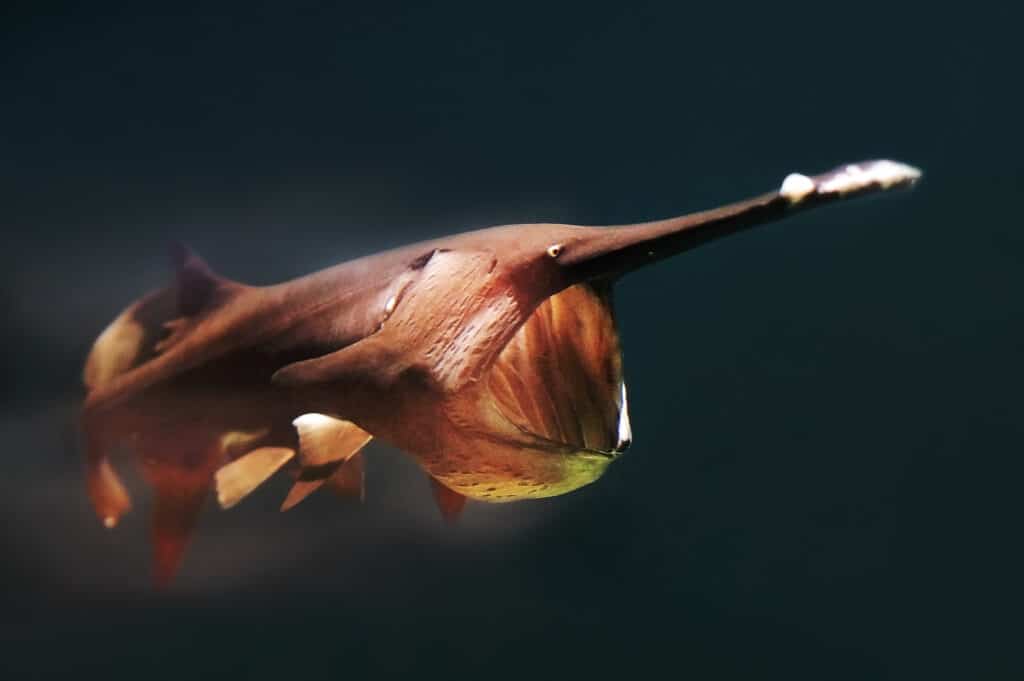
American
Paddlefish
use their large gills and mouths to capture zooplankton.
©Marina Veder/Shutterstock.com
Paddlefish have elongated, paddle-shaped snouts with large, fleshy lips. They use their lips to filter microscopic plankton from the water as they swim.
27. Proboscis Monkey:
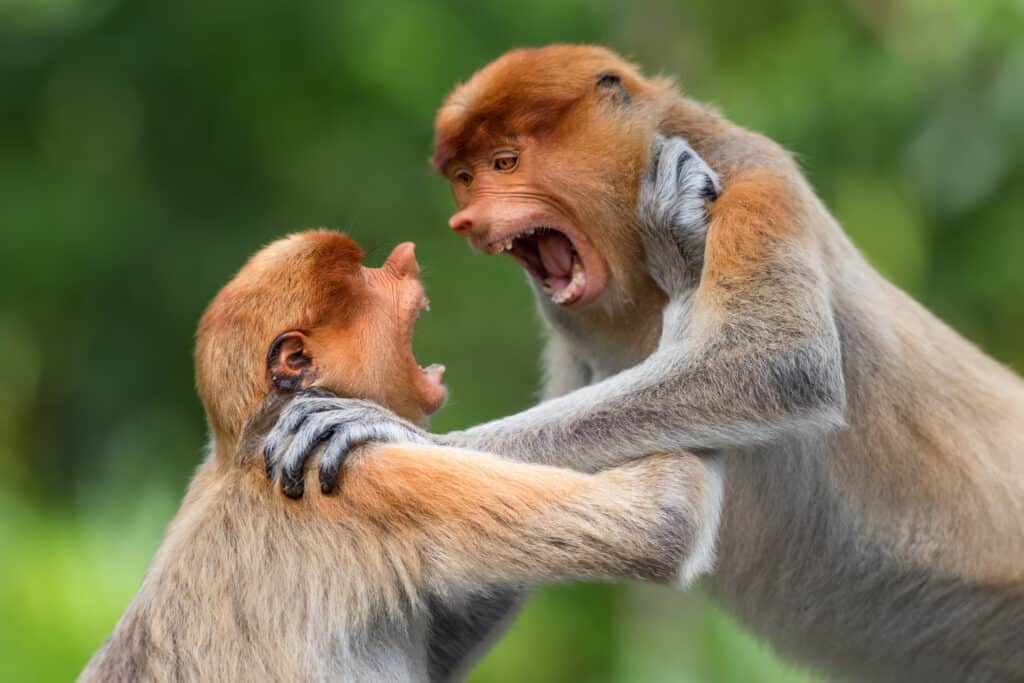
The reasons that monkeys fight extend beyond the usual suspects of food, territory, and the right to mate.
©Patrik Stanek/Shutterstock.com
Proboscis monkeys are known for their large, elongated noses, or proboscises. These noses are primarily found in males and can grow to be quite large, giving them their distinctive appearance.
28. Pufferfish:

The white-spotted
pufferfish
is a native species of Japan.
©Albert kok / CC BY-SA 3.0 – License
Pufferfish have distinctive, puckered lips that form a beak-like structure, which they use to crush and eat small invertebrates.
29. Rhinoceros:
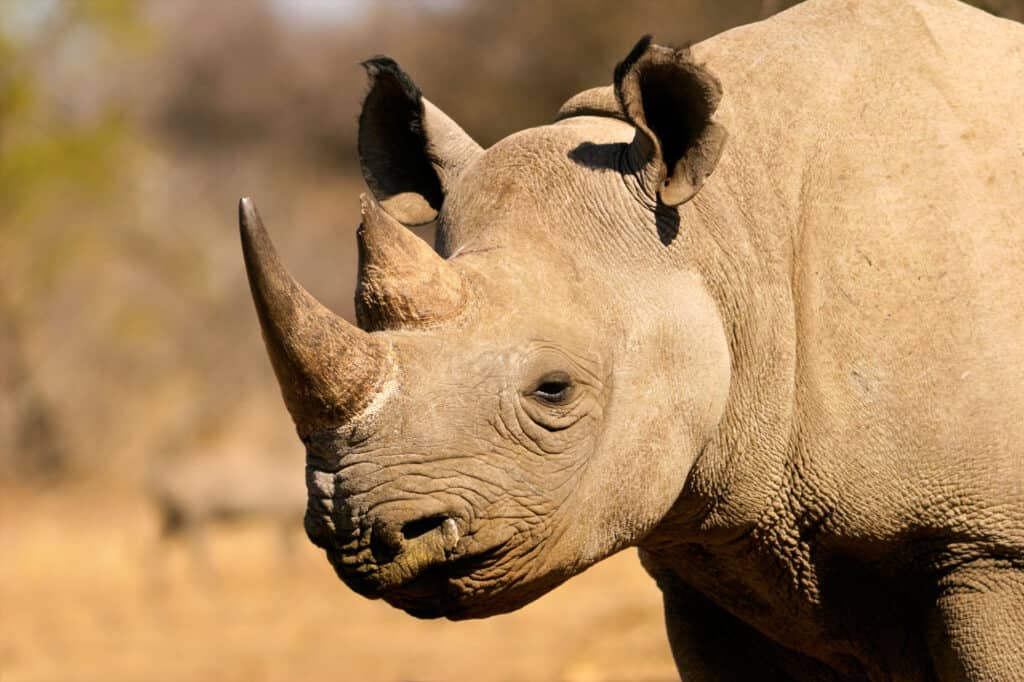
©iStock.com/EcoPic
Rhinoceroses have thick, prehensile lips that they use to grasp and pull vegetation into their mouths while feeding.
30. Saiga Antelope:
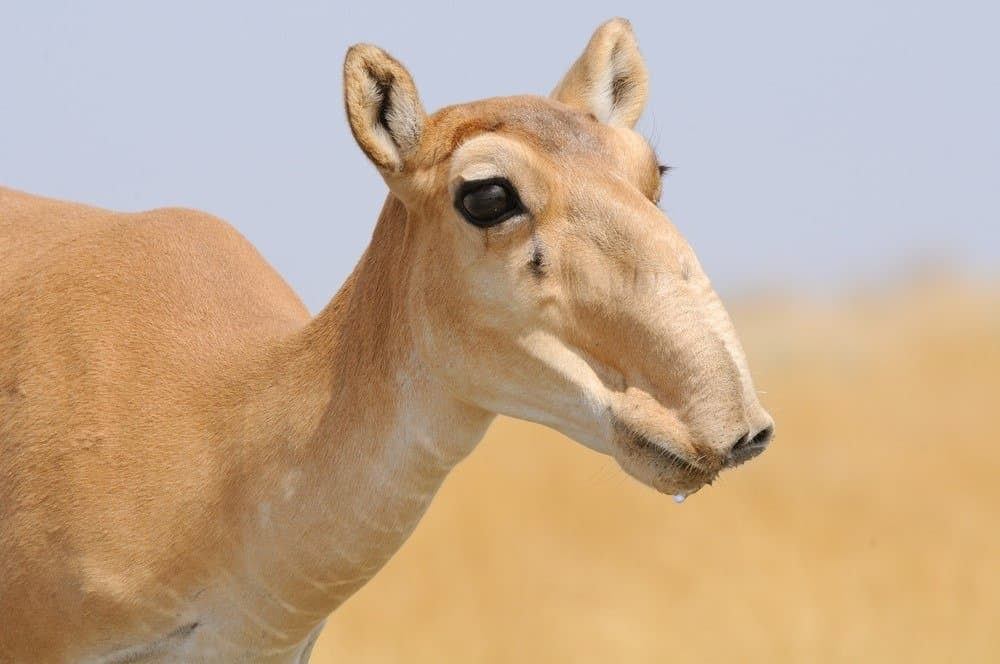
Female wild Saiga
antelope
in morning steppe, Kalmykia, Russia
©Victor Tyakht/Shutterstock.com
Saiga antelopes have unique, tubular-shaped noses that extend downward. Their noses are covered in hair and help filter and warm the air they breathe during cold seasons.
31. Sloths:
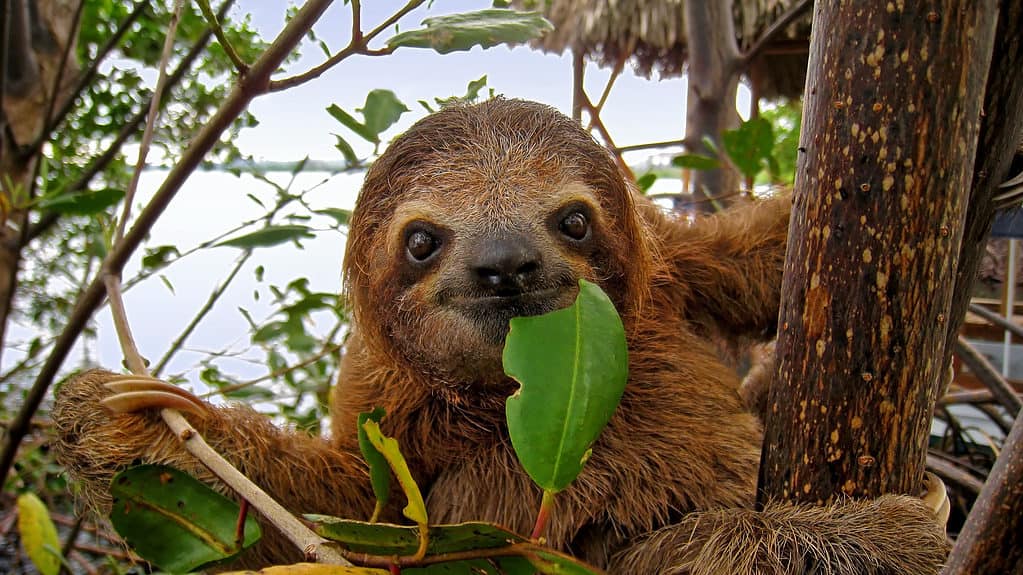
Baby Brown throated Three toed sloth in the mangrove, Caribbean, Costa Rica
©Damsea/Shutterstock.com
Sloths have a unique mouth structure with thick, fleshy lips that cover their teeth. These lips help them grip and chew leaves.
32. Spoonbills:
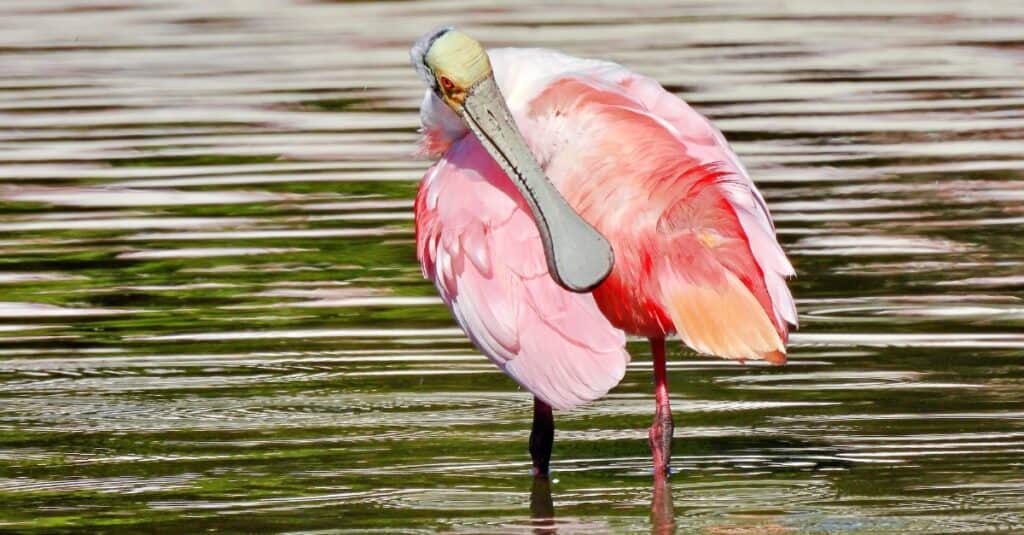
Roseate Spoonbill scratching under wing
©iStock.com/passion4nature
Spoonbills are wading birds with large, flat bills that resemble spoons. These bills have a broad, flattened shape, and their lips are used to filter small organisms from the water.
33. Tapirs:
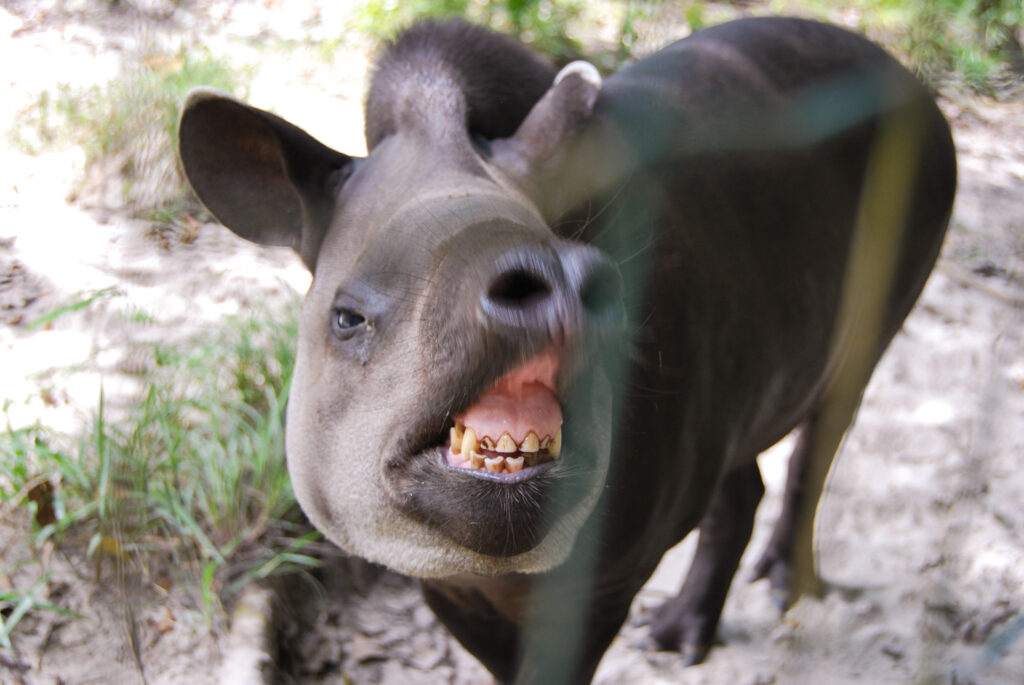
©Margus Vilbas Photography/Shutterstock.com
Tapirs have flexible, mobile lips that they use to grab vegetation and pull it into their mouths. Their upper lips are elongated and can be extended to pluck leaves and fruits from branches.
34. Walruses:
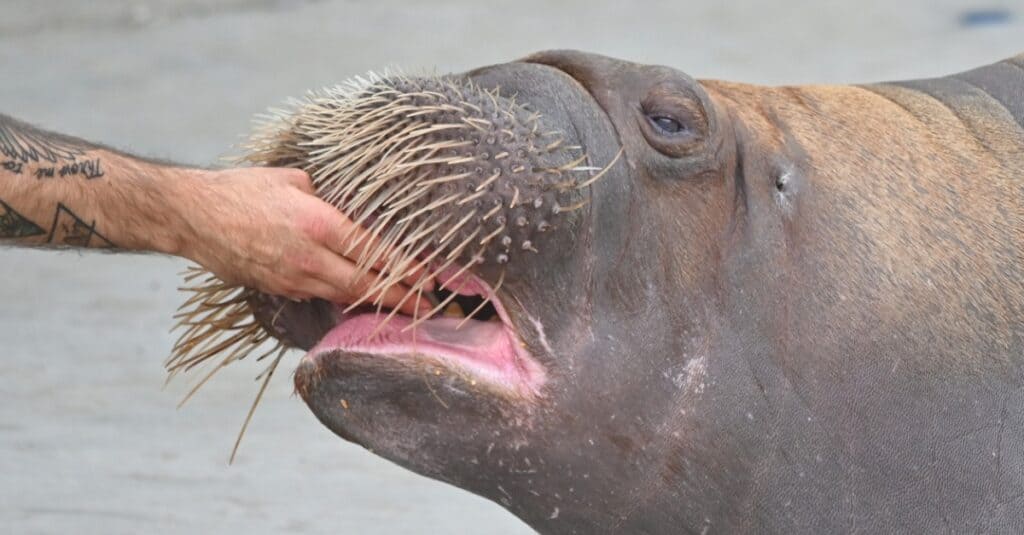
©iStock.com/Dimitri Lefebvre
Walruses have large, fleshy lips that are covered in bristles. Their lips are used for foraging on the ocean floor, where they use suction to suck up mollusks and other prey from the seabed.
35. Whale Sharks:
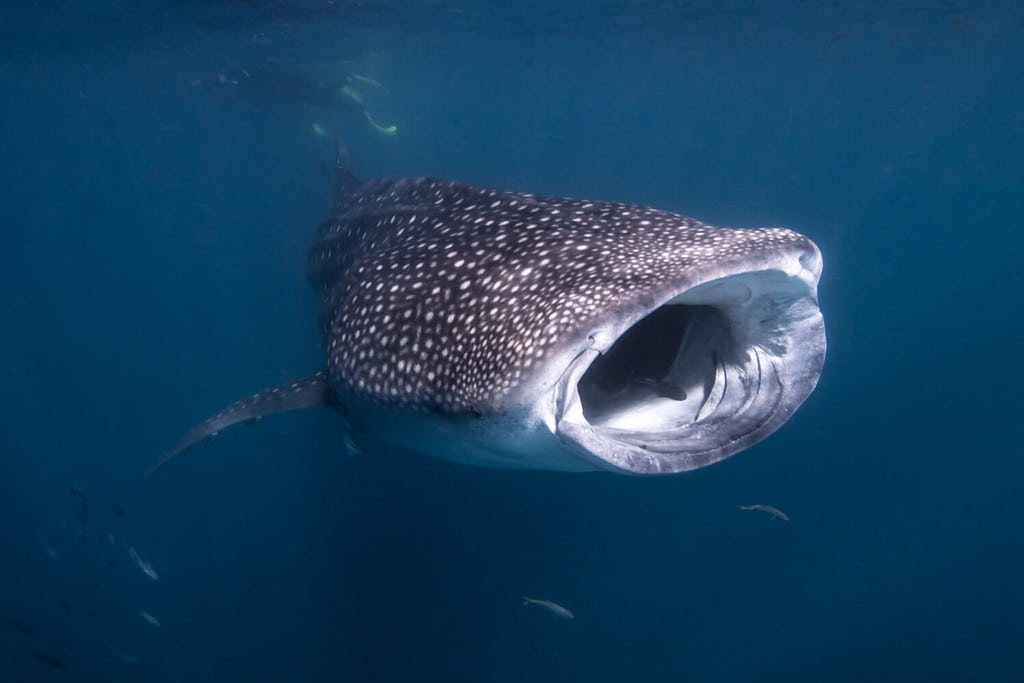
©Sean Steininger/Shutterstock.com
Whale sharks have large, wide mouths with prominent, rubbery lips that help them filter-feed on plankton and small fish.
In Conclusion
In conclusion, the exploration of animals with the biggest lips has unveiled a world teeming with diversity and ingenuity. From the majestic bison and its muscular grazing lips to the charismatic mandrill with its vibrant facial expressions, we have witnessed how nature has shaped these remarkable features for a multitude of purposes. These animals showcase the incredible adaptability and evolution present in the animal kingdom, as lips have been honed to serve crucial functions such as feeding, communication, and even habitat adaptation.
While we have delved into the lips of several fascinating creatures in this article, it is important to acknowledge that the vastness of the animal kingdom means there are likely many more species with noteworthy lips. The intricacies of nature’s design are boundless, and we can only scratch the surface of its wonders. It is an invitation to continue exploring, appreciating, and learning from the incredible diversity that exists within the animal realm.
So, let us continue to marvel at the extraordinary lips found across the animal kingdom, celebrating their uniqueness and the intricate roles they play in the lives of these remarkable creatures. By doing so, we deepen our understanding of the natural world and the fascinating ways in which species have adapted to thrive in their respective environments. Through our continued curiosity and exploration, we are reminded of the boundless wonders that await us in the animal kingdom and the importance of preserving and cherishing this remarkable tapestry of life.
The photo featured at the top of this post is © Jesus Cobaleda/Shutterstock.com
Thank you for reading! Have some feedback for us? Contact the AZ Animals editorial team.






